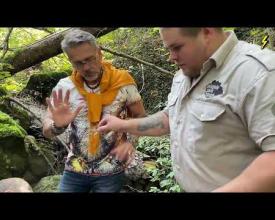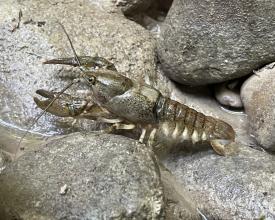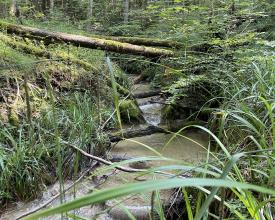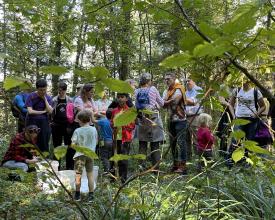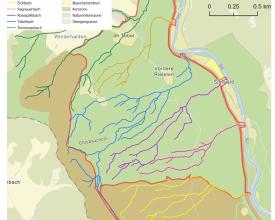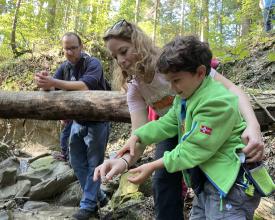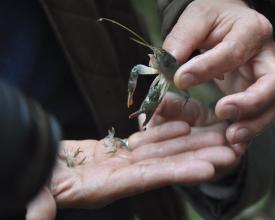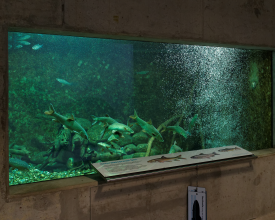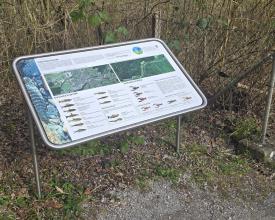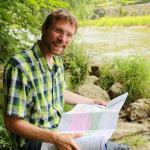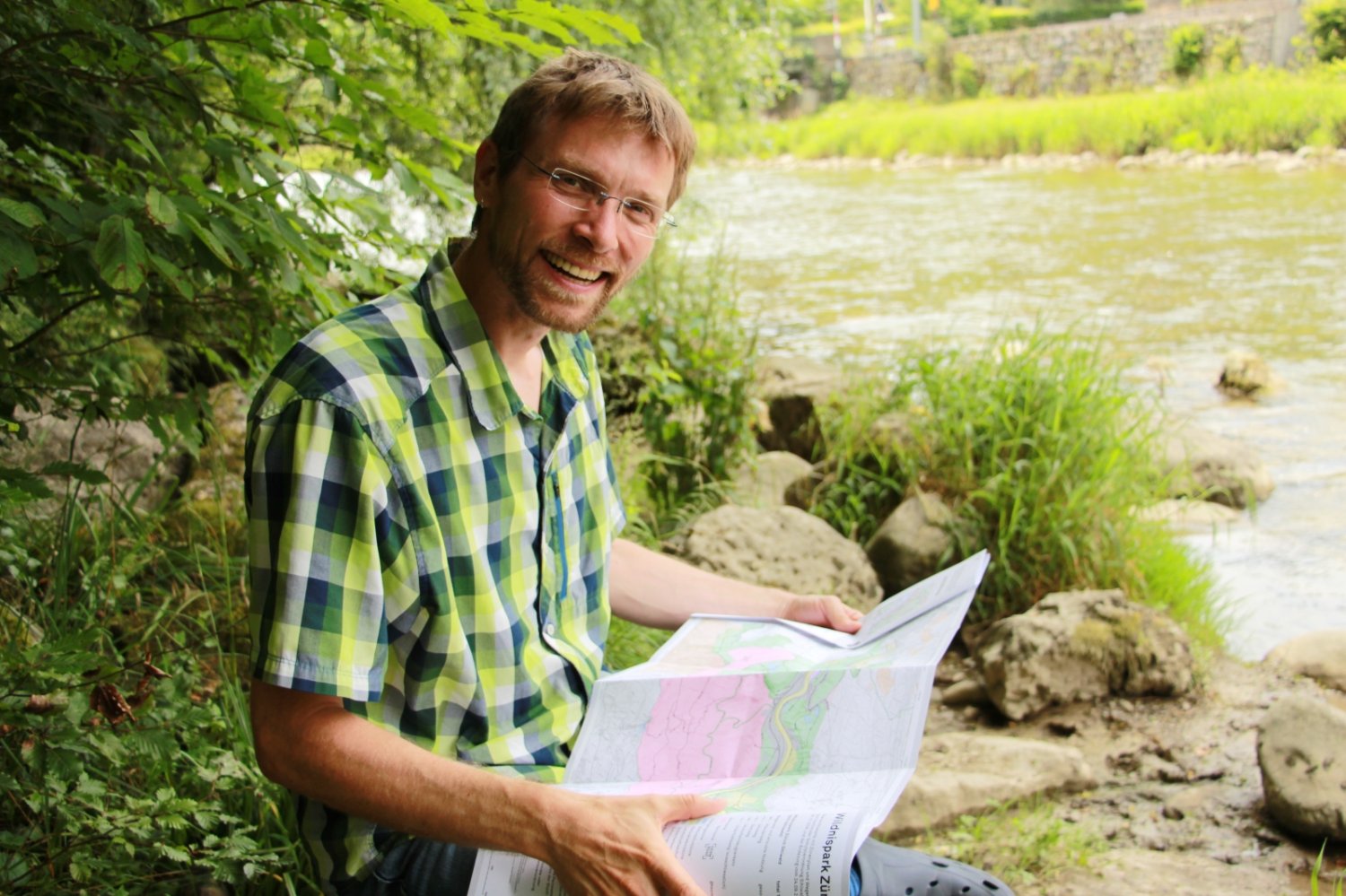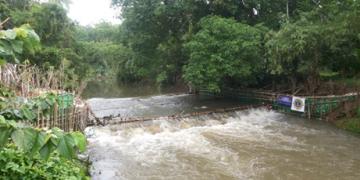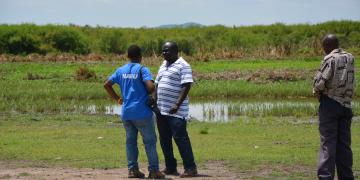
Reintroduction of Crayfish in the Sihlwald Forest Reserve
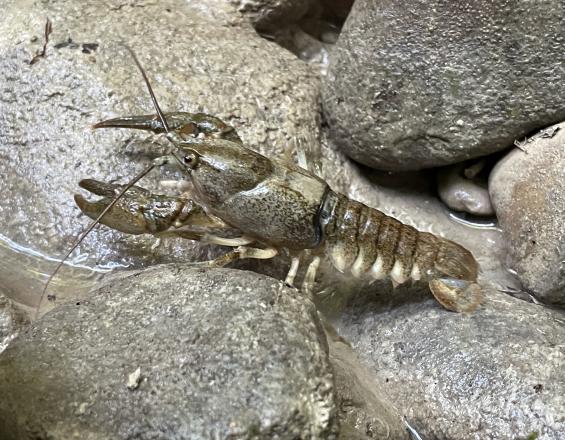
Crayfish used to be widespread in Switzerland. However, the four native species are now under severe pressure threatened by habitat loss and invasive species, including crayfish plague. Crayfish play an important role in the aquatic ecosystem. As omnivores, they break down dead plants or the remains of dead fish, for example. They also serve as food for numerous animals, including larger fish such as pike, as well as foxes, otters, martens and herons.
The aquatic habitat also plays an important role in the Sihlwald forest reserve. The Wildnispark Zurich Foundation is committed to species conservation and supports the promotion of native wild animal species and local populations.
The goal of this project is to restore a viable population of stone crayfish (Austropotamobius torrentium) in the Sihlwald and to sensitize the local population and parks visitors to the topic of the aquatic biocenosis.
Contexte
Challenges addressed
Habitat loss and invasive species, including crayfish plague, are making it difficult for the four native crayfish species to survive. The noble crayfish, which mainly lives in still waters, is endangered, while the stone crayfish and jackdaw crayfish, which prefer streams and rivers, are highly endangered. The Italian jackdaw crayfish, which is native to the canton of Grisons and Ticino, is even threatened with extinction.
The biggest challenges are to build up a stable and viable population and prevent it from falling victim to crayfish plague.
Emplacement
Traiter
Summary of the process
In order to achieve the goals and maximize the benefits of the project, the interaction of all components, as described in the 5 building blocks, is essential.
Building Blocks
Analysis of Habitat Potential
In the Sihlwald forest, field names such as ‘Chrebsächerli’ indicate that there must have once been a crayfish population.
In 2022, as part of his bachelor's thesis at the Zurich University of Applied Sciences, environmental engineer Marc Furrer investigated:
- what is known about the historical populations of crayfish in the Sihlwald,
- whether crayfish currently live in the streams in the Sihlwald and
- whether the streams in the Sihlwald would be suitable as a potential habitat for crayfish.
He investigated six streams in the northern part of the transition zone of the Sihlwald Nature Discovery Park. Two of the streams analyzed were ruled out because they went dry in summer. Of the remaining four streams, one stream was found to have very good habitat conditions for stone crayfish and white-clawed crayfish: all water parameters have optimal values, the watercourse offers countless hiding places due to the high proportion of dead wood and the nature of the stream bed. Stream obstructions in the lower section prevent the migration of invasive crayfish species and thus offer protection against crayfish plague.
Based on the length of the stream and the habitat quality, a possible population of 647 crayfish was estimated.
The results of this study now served as the basis for the reintroduction of crayfish in the Sihlwald.
Enabling factors
The analysis of the habitat potential was carried out in cooperation with experts and researchers from Zurich University of Applied Science and local nature conservation organizations.
Lesson learned
The analysis of the habitat potential is an essential basis for the next steps in this project.
Preparation and Funding
Firstly, an implementation concept was developed, consisting of the following parts:
- Reintroduction (see building block 3)
- Accompanying educational measures (see building block 4)
- Monitoring success (see building block 5)
One of the prerequisites for the reintroduction of crayfish in the Sihlwald is the authorization granted by the Fisheries and Hunting Administration of the Canton of Zurich.
In order to raise the money required for the reintroduction and the educational measures, the association launched a fundraising campaign, which is still ongoing.
Further funding was provided by the Federal Office for the Environment and the Canton of Zurich's Nature Conservation Agency.
Enabling factors
The Wildnispark Zurich Foundation has a professional marketing and fundraising team without which such a fundraising campaign would not be possible.
Lesson learned
In order to have a solid basis for such a project, several sources of funding are required.
Reintroduction of Stone Crayfish
After completion of the preparations (as described in building blocks 1 & 2), the reintroduction of the crayfish into a stream in the forest reserve Sihlwald began with the release event on 21/09/2024. A total of 40 adult stone crayfish (Austropotamobius torrentium) were released with the participation of the local population, the Friends of Wildnispark Zurich (Förderverein Wildnispark Zürich) and the Sihltal Nature Conservation Association (Naturschutzverein Sihltal).
The reintroduction will continue in 2025 and 2026 and further crayfish will be released into the streams in Sihlwald, totaling 150 individuals.
All animals come from donor streams in the region and from local breeding.
Enabling factors
The crayfish are adapted to the local conditions in the release stream because they come from regional donor streams and from local breeding.
Lesson learned
Conclusions on the success of the reintroduction can only be drawn after 5 to 10 years, at the earliest after the success review in 2028.
Education and Awareness-raising
Not only the involvement of the local population in the release event of the crayfish (as described in building block 3) is an important part of education and awareness-raising.
At the same time, the employees of the Wildnispark Zurich Foundation were comprehensively trained, on the one hand to be able to pass on the information to the park's visitors, and on the other hand to keep and breed the crayfish in the aquarium.
In the immediate vicinity of the Wildnispark Zurich visitor center, the underwater life of the river Sihl is explained on information boards and illustrated in an aquarium. The aquarium is home to 7 native fish species and, more recently, a native crayfish species.
Work is currently underway on a comprehensive exhibition on the topic of water as a biocenosis, which is intended to inform children and adults about the native aquatic inhabitants and raise their awareness of their protection. Interactive elements on crayfish will be an important part of this exhibition, which is due to open in summer 2026.
Enabling factors
The aquarium has been in existence since 2005 and there is a great deal of knowledge about keeping aquatic life among the park's employees. The park also has a great deal of expertise in environmental education and awareness-raising, as this is one of the park's core tasks.
Lesson learned
If projects are organized in modules that are also financed individually, then these modules can also be carried out independently of each other.
Monitoring of Success
In 2028, two further surveys are to be carried out in the stream where the crayfish were released to determine whether the release campaigns of 2024-2026 were successful and a stable population of crayfish was able to establish itself in the stream.
Impacts
This solution meets most of the objectives of the Wildnispark Zurich Foundation, which are:
- Process protection
- Species protection
- Education & awareness-raising
- Experience & recreation
- Research
The greatest impact is, that a species that had become extinct in the Sihlwald forest reserve, has been reintroduced into a suitable habitat, thus making a significant contribution to preservation and improvement of the biodiversity.
Beneficiaries
- The key species Stone Crayfish and the aquatic biocenosis.
- The Sihlwald forest reserve and its biodiversity.
- The local population and the visitors to the park can learn about the life in the aquatic biocenosis and how to contribute to its protection.
Global Biodiversity Framework (GBF)
Sustainable Development Goals
Story
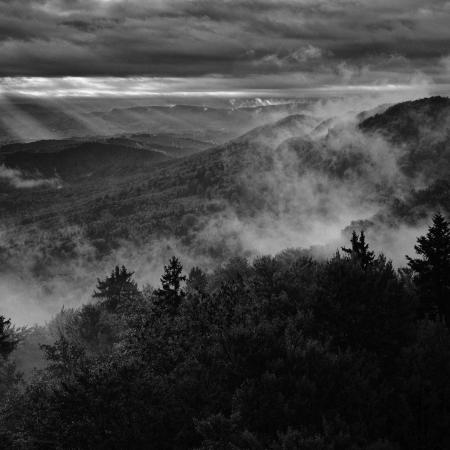
Together with Sihlwald and Langenberg, the Wildnispark Zurich offers a unique combination of forest, wilderness and wildlife.
Sihlwald Nature Discovery Park
Although the Sihlwald was only returned to nature in 2000, there are already large parts of the forest where upright dead trees and fallen, decaying tree trunks lend an impression of wilderness. Wilderness means diverse habitats for plants, animals and fungi. The Sihlwald was the first area in Switzerland that has been awarded and certified with the national “Nature Discovery Park” designation. The certificate recognizes the unique opportunity to combine nature conservation and recreation.
The visitor center in Sihlwald provides information and maps for your foray into the local wilderness. The Sihlwald exhibition also offers you an insight into how the formerly intensively utilized forest is developing into a natural forest. The visitor center with the Sihlwald exhibition is open from the end of March to the end of October.
Langenberg houses the most important native and formerly native mammals in spacious enclosures. Their near-natural design allows brown bears, bison, lynxes, wolves, deer and wild boar to be observed almost as if they were in the wild. The animals are kept in such a way that they can express as much of their natural behavior as possible. In particular, this includes finding mates, rearing their young and, in the case of social species, living together in large groups.

